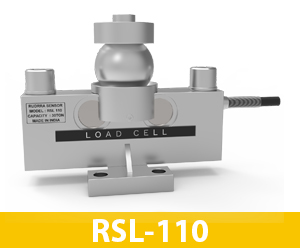Double Ended Shear Beam Load Cells are widely used in heavy industrial applications such as tank weighing, truck scales, batching systems, and hoppers due to their durability and accuracy. However, like any precision device, they can face performance issues if not installed, handled, or maintained properly. Understanding these common issues and knowing how to troubleshoot them can help ensure long-term reliability and prevent costly downtime.
1. Signal Instability or Fluctuation
One of the most common problems with double ended shear beam load cells is fluctuating or unstable output signals. This often occurs due to electrical noise, improper grounding, or moisture entering the load cell housing. To fix this, ensure proper shielding and grounding of cables, and verify that the load cell is sealed and protected from water ingress, especially in outdoor environments.
2. Zero Drift or Shifting Zero Point
If the load cell shows a non-zero output when there’s no load applied, it’s called zero drift. This can happen because of temperature changes, loose mounting bolts, or long-term mechanical stress. To troubleshoot, check the mounting hardware, re-torque all bolts, and recalibrate the load cell after ensuring stable ambient temperature.
3. Load Cell Not Returning to Zero After Unloading
When the load cell fails to return to its original zero reading after removing the load, it may be due to mechanical binding or permanent deformation. Check for any obstructions or misalignment in the mounting system. Ensure that there is no dirt, rust, or foreign material between the load cell and its mounting surface. If deformation is confirmed, the load cell may need to be replaced.
4. Inconsistent Readings Under the Same Load
If you are getting different readings each time the same weight is applied, the cause could be uneven load distribution, improper mounting, or a failing cell. Make sure the load is centered and the mounting surface is flat and rigid. Also, inspect the load cell for signs of wear, damage, or corrosion that may affect its accuracy.
5. Electrical Wiring or Connection Errors
Incorrect wiring is another frequent issue, especially during initial installation or when replacing an old load cell. Always follow the manufacturer’s wiring diagram carefully. Ensure that there are no loose or corroded connectors, and check for cable damage that could cause short circuits or signal interference.
6. Environmental Damage
Double ended shear beam load cells are often used in harsh environments with dust, moisture, and vibration. Exposure to such conditions can lead to internal damage, reduced insulation resistance, or sensor failure. Use load cells with proper IP-rated protection and consider adding protective enclosures or mounting systems suited for rugged use.
7. Overloading or Shock Loading
Applying a load beyond the rated capacity of the load cell can cause permanent damage. Sudden impact or shock loading is also harmful, especially in dynamic weighing applications. If overload is suspected, visually inspect the load cell and test its output. Most modern load cells come with built-in overload protection, but it’s still essential to operate within safe limits.
8. Improper Grounding or Shielding
Electrical interference from nearby machinery, welding equipment, or motors can introduce noise in the signal. Proper grounding and shielding of the load cell and indicator are essential to eliminate such problems. Use high-quality shielded cables and connect the shielding properly to ground at one end only.
9. Corrosion or Rust Formation
In wet or corrosive environments, stainless steel load cells are recommended, but even these can degrade over time if not maintained. Regular inspection and cleaning of mounting areas, cables, and connectors help prevent long-term corrosion-related issues.
10. Faulty Load Cell Amplifier or Indicator
Sometimes the issue is not with the load cell itself but with the signal conditioning electronics like amplifiers or indicators. If the output seems off, try connecting a different load cell to the same device to see if the problem persists. Swapping out parts methodically can help identify whether the load cell or the instrumentation is at fault.








